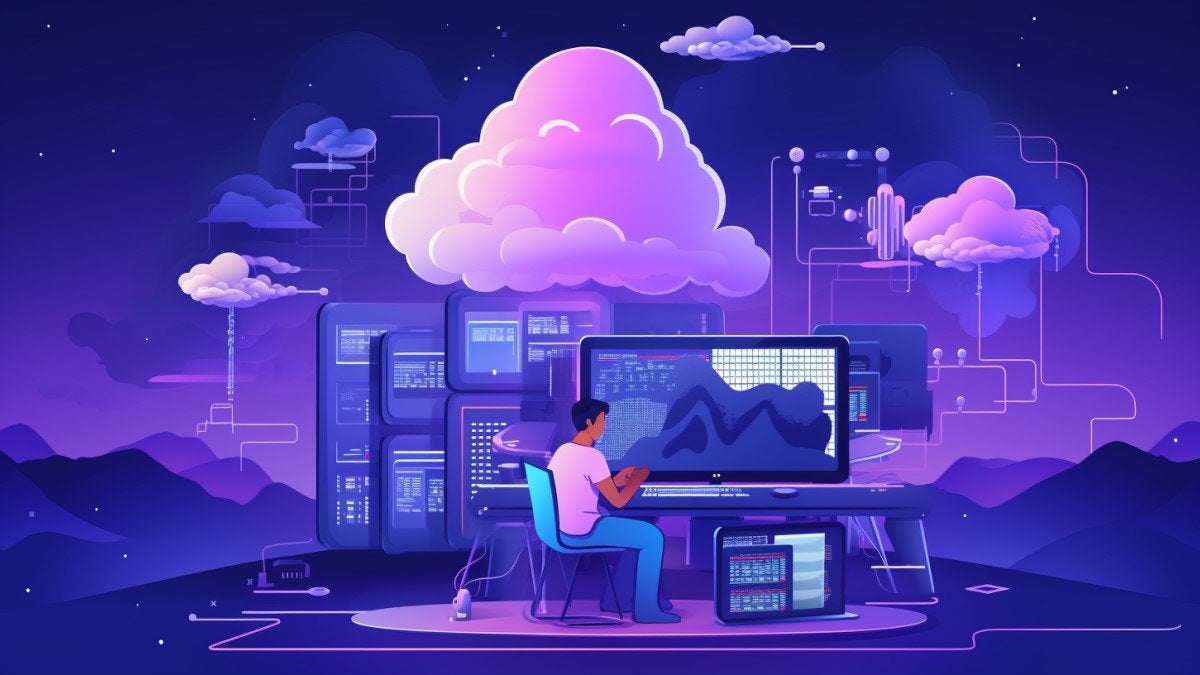![]() Key Takeaway
Key Takeaway
Cloud Gaming lets you play high-quality games through streaming—without needing powerful hardware, which makes gaming more accessible for everyone.
When it comes to modern gaming, traditional hardware might seem limiting. Cloud Gaming is an innovative solution that enables you to play high-end games without sophisticated equipment. It’s the latest frontier in gaming technology, offering players unparalleled freedom and choices across multiple devices.
Table Of Contents
What is Cloud Gaming?
Cloud Gaming, at its core, is the Netflix of the video gaming world. Instead of downloading a game to your device or popping in a physical disc, you stream it live from powerful servers miles away.
Imagine playing the latest AAA game title on your modest laptop or smartphone, with all the heavy lifting done remotely in the cloud. No bulky gaming consoles, no high-end gaming PCs, just a stable internet connection and you’re set to dive into the most immersive virtual worlds.

This transformative approach is reshaping the landscape of the gaming industry. With barriers like expensive hardware and storage limitations melting away, cloud gaming brings the promise of high-quality gameplay experiences to a much broader audience.
As more people gain access to top-tier games, the gaming community is poised to become more inclusive and diverse than ever before. Additionally, developers can envision their creations reaching a wider audience, allowing for more innovation and varied game narratives.
In essence, cloud gaming is democratizing the world of video games, making it accessible and enjoyable for everyone, everywhere.
How Does Cloud Gaming Work?
Cloud gaming, while a seemingly magical experience for the end-user, leans heavily on robust technology to provide that seamless gameplay. Here’s a dive into the mechanics of it.
How Cloud Servers Operate
At the heart of cloud gaming are data centers brimming with high-performance servers. Here’s a simple breakdown of their operation:
- Game Execution: The game doesn’t run on your local device; instead, it runs on these remote servers.
- Streaming: Just as you’d stream a movie or TV show, the gameplay is continuously captured and converted into an audio/video stream.
- Delivery: This stream is then sent over the internet, rendering the game in real-time on your device.
- Player Interaction: Your game inputs (like mouse clicks, keyboard presses, touchscreen taps, etc.) are sent back to the server, which processes them.
The Role of High-Speed Internet and Latency
Having high-speed internet is vital in cloud gaming as it’s responsible for promptly transmitting large quantities of game data. The swifter the connection, the better the stream quality—showcasing crystal-clear audio, vivid graphics, and fluid animations.
To get the most out of cloud gaming, a connection speed ranging between 15-25 Mbps is usually recommended by many service providers.
Latency represents the time gap between a player’s action, such as pressing a button, and the game’s subsequent reaction, like a character leaping.
Maintaining low latency is necessary for a pleasant cloud gaming experience; your desired rate is usually under 20 milliseconds. If the latency is too high, it can impede gameplay, making fast-paced games particularly challenging.
Various factors can influence latency, including the player’s distance from gaming servers, the caliber of their internet connection, and prevailing network traffic conditions.
| Component | Role | Ideal Parameter |
|---|---|---|
| High-speed Internet | Transmits game data rapidly | 15-25 Mbps or higher |
| Latency | Time between user action and game response | Below 20 milliseconds |
| Cloud Servers | Execute and stream the game | High-performance, low fail |
Cloud Gaming Platforms and Providers
The cloud gaming domain has witnessed several pioneers and new entrants, each bringing its flavor and technical prowess to the table. Here are some of the most prominent cloud gaming services, along with their unique features and benefits.
NVIDIA GeForce Now
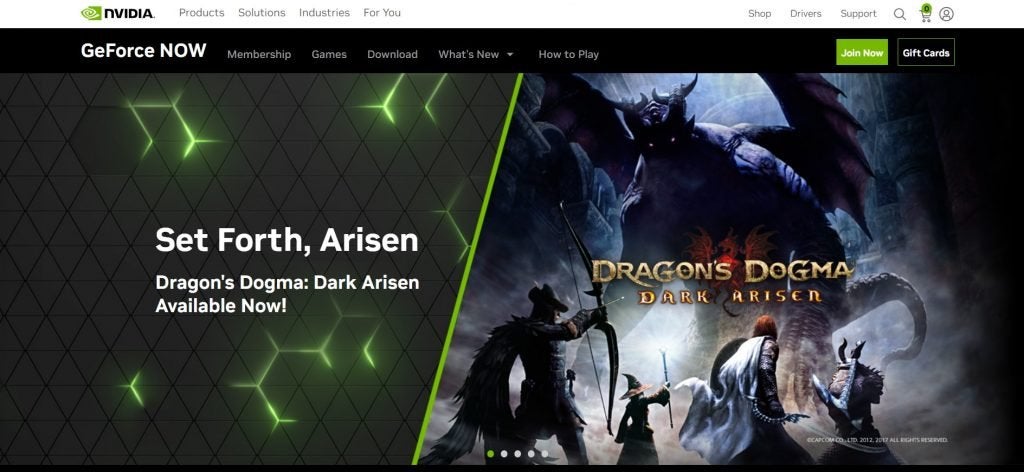
A current favorite among critics and players alike, GeForce Now boasts a massive library of games, incredible visual quality, and a free plan for those wanting to test the waters.
Unlike many other cloud gaming services, you won’t need to buy games directly from NVIDIA GeForce Now, as it links with your Steam, GOG, and Epic Games Store accounts. This makes it possible to play games you already own on a different platform—including multiplayer games—while also allowing you to test out games you might want to buy in the future. On top of that, the service supports launchers for Origin and Ubisoft Connect. If you decide to buy a game to play with GeForce Now, you aren’t tied to the service. The game is yours for good.
The free membership allows up to an hour of standard-quality gameplay at a time. Priority membership, costing $8.99 a month, allows you to play for up to six hours at a time, includes ray-tracing (when applicable), and bumps the quality up to 1080p at 60 FPS.
NVIDIA’s highest tier, Ultimate, costs $19.99 a month and allows eight hours of playtime in a session. You’ll also be given access to servers running RTX 4080 graphics cards, and those playing on PC can expect up to 1600p at 120 FPS.
The service is available on some TVs natively, and all TVs with Nvidia Shield. You can also run GeForce Now on PC, Mac, Google Chromebooks, or the Chrome browser itself. Those wanting to play on their smartphones will need an Android device (5.0 or higher) with at least 2GB of RAM. iOS users can visit play.geforcenow.com on the Safari browser.
Xbox Cloud Gaming
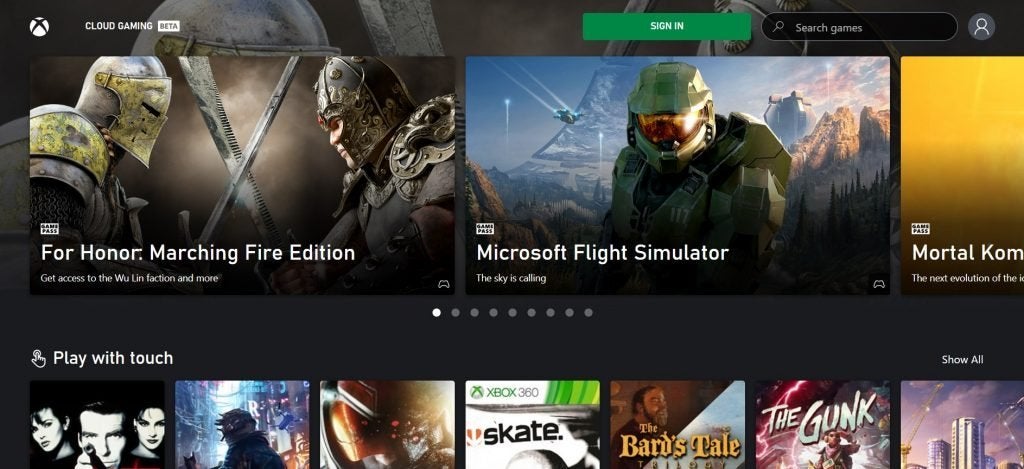
Originally known as Project xCloud, Microsoft’s cloud gaming service is only available to Xbox Game Pass Ultimate subscribers. Over 300 games are currently available, offering players a chance to dive into a wide array of both AAA and indie titles with no time or quality limitations. Game saves are synced, making it easy to pick up where you left off—on your PC or the Xbox console of your choice.
While the library is robust, games on Xbox Cloud Gaming are rotated often, meaning that your favorites may not stick around for long. You also need a controller if you’re playing on PC, as the service doesn’t support mouse-and-keyboard inputs. Expect a max performance of 1080p at 60 FPS streaming.
As the name may imply, the service is not available on PlayStation or Nintendo consoles and is only available on Windows PCs and select Samsung smart TVs made in 2021 and after. Mobile gamers using Android devices, iPhones, or iPads can also join in on the fun by either using a controller or the on-screen touch input overlay. As with GeForce Now, Apple users will need to access the service using the Safari browser.
PlayStation Plus
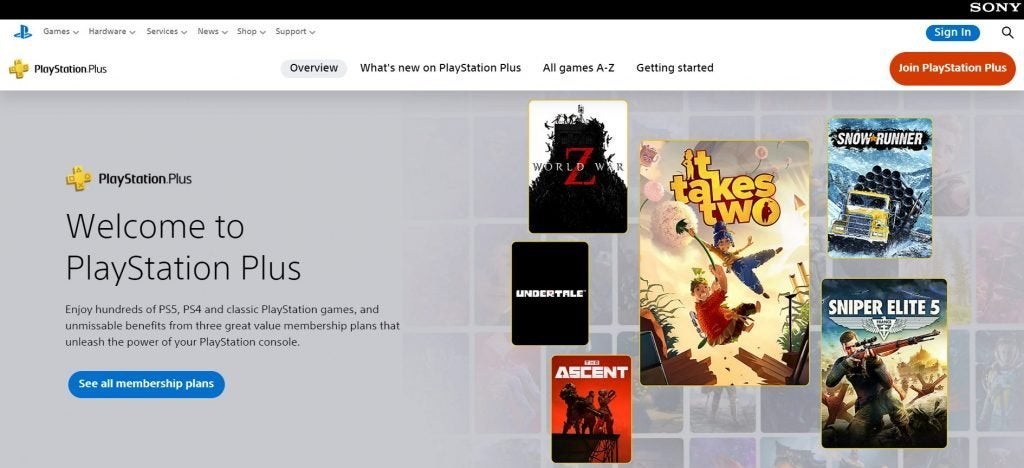
In 2022, Sony announced that PlayStation Now, its cloud gaming service, would be grouped with the new and revamped PlayStation Plus. The 3-tiered system only offers cloud gaming with its most expensive package, PlayStation Plus Premium, which costs $17.99 a month.
With PlayStation Plus Premium, players can stream PlayStation 4 and PlayStation Classics games on PlayStation 4 or PlayStation 5 consoles. Games are also available to play on PC through the use of a free app. Unfortunately, current reviews place the service well behind GeForce Now and Xbox Cloud Gaming when taking performance into account. Though titles are capable of reaching 1080p at 60 FPS, image buffering and lag are common issues for players.
If you’re still willing to give it a try, PlayStation’s cloud streaming service does offer a huge library of beloved games, and experiences vary. If your home internet is powerful enough, PlayStation Plus Premium comes with several other perks, including full access to the Classics Catalog and limited game trials.
Amazon Luna
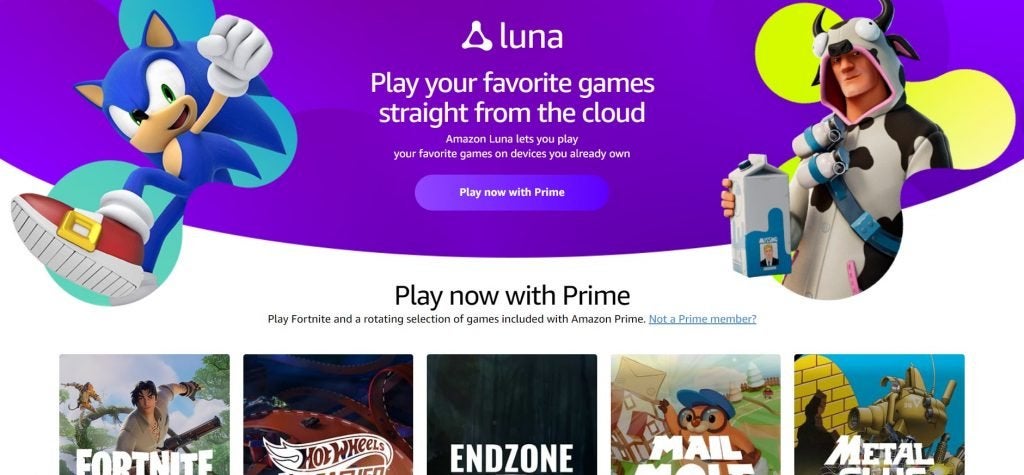
If you’re more interested in niche and retro games, Amazon Luna might be the cloud gaming service for you. Luna’s interface is smooth and satisfying, its price is low, and Prime members get a consistent free rotation of games along with exclusive deals.
There are numerous subscription plans, or “channels,” each with different prices and themes. It’s possible to subscribe to more than one channel at a time. Popular examples include the Family channel ($5.99/month), the Retro channel ($4.99/month), and the Jackbox Games channel ($4.99/month). Luna+, the main channel, includes games from multiple genres and currently features big-name titles like Saints Row, Resident Evil 2, and Devil May Cry 5.
Luna’s performance is impressive, both in the browser and the standalone app on PC. Additional compatible devices include Android and iOS devices, Fire TV, Fire Tablets, and Samsung smart TVs made in 2021 or after. As with other comparable cloud streaming services, players can expect a max performance of 1080p at 60 FPS.
Benefits of Cloud Gaming
Cloud gaming, often hailed as the future of interactive entertainment, has thrown open the gates to several advantages that significantly enhance the gaming experience.
One major attraction of cloud gaming is its inherent cost efficiency. Previously, diving into high-resolution, graphically intensive games meant a substantial investment in gaming consoles or state-of-the-art PCs. Cloud gaming eliminates the need for such expensive equipment. Gamers don’t have to shell out a lot of money or worry about their hardware becoming obsolete in a couple of years.
This democratization of gaming extends beyond just the financial aspects. The very essence of cloud gaming lies in its accessibility. Whether you’re on a modest laptop during your commute, a tablet while lounging at a café, or even a smartphone during those quick breaks at work, your favorite games are just a click away. Cloud gaming makes the world your gaming arena.

Cloud gaming platforms have also simplified the once tedious process of game updates and installations. Remember the times when a game’s launch day meant waiting hours for downloads and installations? Those are bygone days. With games hosted on the cloud, updates are integrated seamlessly, so players always have access to the latest version.
The scalability and flexibility offered by cloud gaming are also of significant note. Traditional gaming setups had their limits. If a game demanded more power or storage than your system could offer, you were either left with a sub-par experience or couldn’t play the game at all. Cloud gaming, however, adjusts resources based on the game’s requirements. Whether a game needs more processing power, RAM, or storage, cloud servers scale accordingly.
All these benefits, when combined, make high-end gaming a universal experience.
Cloud Gaming Examples
As cloud gaming has gained momentum, several iconic games have been optimized to improve their capabilities, offering enhanced experiences that were once unthinkable.
These games, either by their sheer scale, graphical prowess, or unique features, serve as perfect examples of the potential of cloud gaming.
| Game Title | Developer/Publisher | Cloud Gaming Feature Highlight |
|---|---|---|
| Assassin's Creed Odyssey | Ubisoft | One of the first major titles to be tested on Google Stadia, this game showcased the platform's capability to handle detailed open-world environments with no performance drop. |
| Cyberpunk 2077 | CD Projekt | Despite its demanding graphics and vast open-world, cloud platforms managed to deliver a smooth experience, bypassing many of the issues faced by traditional console and PC users. |
| Death Stranding | Kojima Productions | The intricate landscapes, detailed character models, and real-time weather effects highlighted the cloud's ability to handle graphically intensive scenarios seamlessly. |
| Destiny 2 | Bungie | Being a multiplayer online game, Destiny 2 on cloud platforms emphasized the potential for real-time multiplayer experiences without lag or performance issues. |
| Baldur's Gate 3 | Larian Studios | Launched as an early access title on Stadia, it showcased how cloud gaming can handle complex RPG mechanics, including real-time decision-making and extensive world-building. |
Challenges and Criticisms of Cloud Gaming
While cloud gaming holds promise and offers many benefits, it isn’t without its challenges and criticisms. As the industry moves forward, addressing these concerns will be necessary to ensure cloud gaming’s growth and widespread adoption.
Latency and Lag Concerns
One of the biggest criticisms of cloud gaming revolves around latency and lag. Gaming requires instantaneous responses, where even a split-second delay can drastically affect the outcome of a game.
When gaming on the cloud, data travels between the user’s device and the cloud server, which can sometimes result in noticeable delays, especially in fast-paced games. This latency can mar the overall gaming experience, especially in genres like first-person shooters or competitive esports, where every millisecond counts.
High-Speed Internet Requirements
Coupled with latency concerns is the issue of high-speed internet. Cloud gaming’s smooth operation requires a consistent and fast internet connection. While urban areas with robust infrastructure might take this for granted, many regions globally still lack access to high-speed internet.
Even in well-connected areas, not all gamers have the top-tier broadband plans that cloud gaming often demands. So, while cloud gaming promises hardware democratization, it also creates a new barrier based on Internet accessibility.
Data Usage and Associated Costs
There’s also the issue of data usage. Cloud gaming, especially at higher resolutions, consumes significant amounts of data. For users with capped data plans, this can quickly lead to exhausting their monthly allowances, which can also bring about extra fees.
As games become more graphically intensive, the amount of data required will only escalate. This could either lead to increased costs for users or force them to compromise on the gaming quality, neither of which is an ideal scenario.
The Evolution and History of Cloud Gaming
Cloud gaming, in its nascent stages, was a visionary concept, promising to redefine the traditional gaming paradigm. Originating in the early 2000s, the idea revolved around utilizing centralized servers to run games, thereby eliminating the need for high-end local hardware. Initial forays into this space, such as the services offered by companies like OnLive, were groundbreaking but faced challenges in terms of latency and the quality of the gaming experience.
Fast forward to the next decade, and the landscape saw rapid transformations. With advances in cloud technologies, internet speeds, and compression techniques, cloud gaming began its ascent to mainstream recognition. Major tech giants like Google, with its Stadia platform, and NVIDIA, with GeForce Now, entered the fray, marking pivotal milestones in cloud gaming’s evolution. The cumulative efforts of these pioneers propelled cloud gaming from a theoretical concept to a tangible, game-changing reality.
The Future of Cloud Gaming
The future for cloud gaming gleams with potential and promise. As technological advancements continue at an unprecedented pace, we can anticipate further refinements in latency reduction. And, with the advent of tech like 5G and advanced server-side optimizations, the kinks that currently ail cloud gaming are set to be ironed out, bringing about a more enjoyable gaming experience.
Market predictions signal growth for cloud gaming in the coming years. Emerging economies, with rapidly growing digital infrastructures, present fertile grounds for expansion. Countries in Southeast Asia, Africa, and South America, previously untapped by the gaming industry due to hardware limitations, now stand on the brink of a gaming revolution brought forth by the cloud.
The global landscape is shifting, and as it does, cloud gaming is poised to redefine not just how we play, but also where and when.


